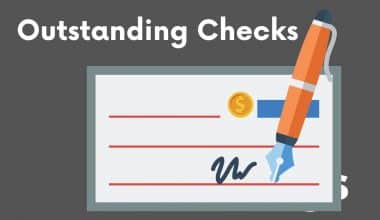Starting a business is costly. One of the first and most significant financial decisions most business owners make is how to fund their company. Small business funding and how you choose to fund your company could have an impact on how you structure and run it.
Also, small businesses frequently require outside money, or capital, in order to grow into new markets or locations, invest in research and development or fight off competitors.
While corporations generally strive to fund such projects with earnings from current operations, it is often more advantageous to seek external lenders or investors.
Despite the numerous distinctions across the world’s thousands of enterprises in various industry sectors, all firms have access to a limited number of funding sources.
To assist you in finding a good fit for your small business, we’ve compiled a list of the Top New 15+ funding options in 2023.
Small Business Funding
Small business funding is the process through which a new or existing small business owner acquires funds to establish a new firm, purchase an existing small business, or inject funds into an existing small business to finance current or future commercial activity.
There are numerous options for financing a new or current business, each with its own set of advantages and disadvantages. Alternative methods of small business funding are becoming more popular as time goes on.
New Small Business Funding
Starting, expanding, or investing in a business all present unique opportunities, risks, and challenges. Small businesses worry a lot about raising enough finance to keep their operations running smoothly.
Any business’s first phase is critical, and in order for it to get off the ground and achieve traction in the market, it will require swift business capital.
The interest rates on these loans are determined by a variety of factors, including the type of lending authority, the type of business, credit rating, market trends, and the amount of loan requested.
These loans can range from short-term to long-term financing, and they can be renewed after a certain period if the company can pay the amount back within the stipulated time frame.
What is the Most Common Way to Fund a Small Business?
The most common and fastest way you could fund your small business is to sort for government loans and grants. There are several other online lenders that would provide you with the adequate amount you need to start your business.
Listed here, in this article, are some of the sources of small business funding. Kindly contact us for more information about available loans and grants. we would be happy to help you.
Small Business Funding for Startups
Here is a list of small business funding for startups:
- Angel Investing
- Working Capital Loan
- Term Loan
- Equipment and Invoice Loans
- Cloud Funding and Crowdfunding
- Partners and Venture Capital
>. Angel Investing
Angel investors are influential people who want to put money into a company that they believe has the potential to be profitable in the future.
However, before approaching an angel investor, you should make sure you have a solid business strategy in place.
These investors are also organizing investor groups to help them conduct more in-depth research on small enterprises.
>. Working Capital Loan
Small firms use these loans to cover their liquid liquidity demands in the near term. A working capital loan can be quite useful when a company’s daily activities require a large amount of cash. Business capital is usually issued for a period of six months to a year, with interest rates ranging from 12 per cent to 16 per cent, depending on the credit risk of the company.
>. Term Loan
Term loans are long-term loans taken out by a company when investors like a pitch made by a company and would be ready to fund that proposal for credit to meet a company’s capital expenditures if they were offered the complete amount.
Small business funding has a set term and a reduced interest rate, and it is based on a company’s credit profile. These are usually secured by collateral, however, they can sometimes be offered unsecured. They can last anywhere from 15 to 20 years and have a fixed or variable interest rate.
>. Equipment and Invoice Loans
Equipment loans are designed specifically for companies that deal with manufacturing operations. Banks provide specialized small business funding for the acquisition of necessary and expensive equipment, with amounts ranging from Rs. 25 crores to Rs. 100 crore in some cases. These loans can last up to 5 years and have a cheaper interest rate if the equipment is used as collateral as well as some other security.
Due to the time lag between creating an invoice and receiving payment, invoice loans are commonly used to raise funds. Banks give such loans for 80% of the invoice amount, with the remainder due when the invoice is paid in full.
>. Cloud Funding and Crowdfunding
Cloud funding is a method of obtaining finance for a business via the internet from a variety of investor organizations, which allows you to pitch your ideas.
Crowdfunding is a collection of small company financiers who assist business ideas in reaching out to a variety of potential investors via various platforms.
These investments can take the form of debt or equity. Some crowdfunding platforms also offer incentives in exchange for contributions. Instead of pursuing a single large investor, crowdfunding allows you to reach out to a group of investors.
>. Partners and Venture Capital
Strategic partners for a company can be a fantastic source of cash since they align their efforts to aid another company. These partners can choose to work for the company as employees. VCs, on the other hand, are firms that provide investment to small businesses in their early stages.
They are, however, looking for more substantial investments and a controlling stake in the company. These firms typically invest against their own stock and depart after the company is acquired. They also give coaching and assess a business’s long-term viability.
What are the Methods of Funding?
Companies can raise capital in three ways: retained earnings, borrowed capital, and equity capital. Companies that use retained earnings owe nothing, but shareholders may expect a rise in profits. Businesses obtain debt capital by borrowing from lenders and issuing corporate debt in the form of bonds.
Small Business Funding Options
Explore the following sources of small business funding options as you start and grow your own business.
- Debt financing
- Equity financing
- Rollover retirement funds
- Merchant cash advance
- Invoice discounting
- Equipment/asset finance
- Purchase order and contract finance
- Business finance marketplaces
- Unsecured loan
- SBA investment programs
- Online lenders
- Small business grants
- Micro-financing
- Credit cards
#1. Debt financing
The main advantages of borrowing funds to finance a new or existing small business are that the lender will normally have no say in how the firm is run and will not be entitled to any of the profits generated by the business. The downsides are that the payments may be particularly burdensome for new or expanding firms.
Conventional lenders (banks, credit unions, etc. ), friends and family, Small Business Administration (SBA) loans, technology-based lenders, microlenders, home equity loans, and personal credit cards are all possible sources of debt financing. To start their firm, small business owners in the United States borrow an average of $23,000 from friends and family.
#2. Equity financing
The main advantage of selling an ownership interest to finance a new or existing small business is that the money raised may be used to run the company rather than making potentially burdensome loan payments.
Furthermore, in the event that the business loses money or collapses, the business and its owner(s) are usually exempt from repaying the investors. Friends and relatives, angel investors, and venture capitalists are all possible sources of equity financing.
#3. Rollover retirement funds
Rolling over one’s 401k, IRA or other retirement funds into a franchise or other business venture is a less well-known but well-established way for entrepreneurs in the United States to finance a new or existing business.
This type of financing is sometimes referred to as “rollover as a business startup” or “ROBS” finance. Instead of taking out a loan, the business owner establishes a C Corporation, which supports a profit-sharing retirement plan. The business owner then uses the company retirement plan to acquire stock in his own company, so contributing to its finances.
This small business financing strategy combines the advantages of debt and equity financing while avoiding the drawbacks of debt, such as high monthly payments. Over 10,000 entrepreneurs have used their retirement money to support their new ventures.
#4. Merchant cash advance
Merchant cash advances (MCAs) are based on the history of card transactions made through a point of sale (POS) device, such as a credit card terminal. As a result, MCAs are mostly issued in the retail sector, where point-of-sale systems are common.
MCAs feature a unique payback process in that there is no set payback period. Depending on the terms of the loan, the borrower repays a portion of their income each month or week. When a borrower makes more money, they are able to repay their debt faster. They repay a smaller portion of their loan when their income is lower.
#5. Invoice discounting
As a kind of security, invoice discounting leverages an invoice issued by a respected provider. Because huge corporations are unlikely to go out of business overnight, the debt they owe the borrower can be used as collateral.
#6. Equipment/asset finance
The piece of machinery or equipment being purchased serves as collateral in equipment and/or asset finance solutions. They may always retrieve the machinery as an asset if the borrower fails on their loan because it has inherent value.
Equipment financing is often known as “lease to own” financing.
#7. Purchase order and contract finance
In most countries, the word “buy order” is frequently used to describe the tendering process. Purchase order finance is intended for situations in which a government agency or a large firm has given a contract to a borrower and the borrower requires funding to complete the deal.
This is known as contract finance or government contract finance in the United States and Canada. The security and distribution mechanisms are the same.
To be eligible for this sort of financing, the borrower must have a signed and won contract from the contract issuer.
#8. Business finance marketplaces
Business finance markets have established themselves as an intermediaries or facilitator to assist small business owners in determining which sorts of small firm loans are suitable for their business and needs.
The process generally works as follows:
- The business owner applies through the marketplace.
- The marketplace has relationships with the majority of small business lenders in their region.
- Marketplace understands the lending appetite of the various lenders and prequalifies the applicant.
- The marketplace sends the final details of the applicant to the lender, based on the applicant’s choice.
- The lender and the applicant finalize the details of the loan.
#9. Unsecured loan
Alternative data sources are used to issue and price unsecured loans. The majority of lending decisions are made based on transaction history, with no formal collateral or security required.
Different lenders make judgments based on different data points. These may include the following:
- Transaction history,
- Business directors’ credit history,
- Trade references,
- Social media activity and following,
- eCommerce transaction history,
- Website analytics,
- Current monthly debt obligations, among others.
#10. SBA investment programs
The US Small Business Administration provides a federal guarantee on your loan to lenders, most of which are regular banks. As a result, banks are less likely to lend you the money you need to succeed.
In addition to guaranteeing the loans, the SBA also connects you with regular lenders who can offer you lower rates. In addition, unlike most bank loans, an SBA loan can be used to launch a business.
However, the application procedure isn’t simple, and you may find yourself buried in a mountain of paperwork while filling out the necessary forms.
#11. Online lenders
With traditional banks restricting access to money, online lenders have grown in popularity, particularly among business owners with poor credit.
Online lenders can also provide quick cash, with some of them able to provide funding in as little as 24 hours.
Among the options are peer-to-peer business loans. To connect borrowers with private and institutional investors, these lenders bypass the usual middlemen, such as banks.
Term loans, lines of credit, and invoice finance are among the small-business financing options offered by online lenders.
#12. Small business grants
Small business grants allow entrepreneurs to start or expand their businesses without having to worry about repaying the funding.
Some awards target specific groups of company owners, such as minorities, veterans, and women, and are typically granted through organizations, government agencies, and companies.
The disadvantage of free money is that everyone wants it. Finding and applying for grants will take a lot of effort, but the time spent looking for free money chances could pay off in the long term.
#13. Micro-financing
Microfinancing is another viable small business finance alternative for struggling enterprises, providing additional financial resources to individuals who qualify as low-income borrowers. Community development financial institutions handle micro-financing choices (CDFIs).
You must demonstrate proof of financial difficulties and how they affect your ability to run and grow the business in order to pursue this small business funding option.
#14. Credit cards
Both personal and business accounts can be used to support company purchases. Due to the high-interest rates on most credit cards, this method should only be utilized for short-term funding. Certain credit cards provide rewards, such as cashback, which can help a company’s cash flow.
#15. Lines of credit
When a financial institution (conventional or online lenders) specifies a maximum loan sum that a borrower can sustain, this is referred to as a line of credit. You can take money out of the line of credit whenever you need it, as long as you don’t go over the limit.
When you repay what you’ve borrowed, your credit line may be increased to the maximum amount of credit (similar to a credit card).
Most small business owners use lines of credit for short-term funding and day-to-day operations like paying employees, buying supplies, meeting seasonal needs, etc.
Can I Get a Business Loan of $30000?
Online lenders, regional banks, CDFIs, and some credit unions all offer business loans of up to $30,000. Big financial institutions like Wells Fargo also provide business loans of $30,000.
Small Business Funding with Bad Credit
Here are small business funding with bad credit:
Short-Term Small Business Loans
A short-term small business loan is a lump sum of money that the borrower agrees to repay over a set period of time and on a set schedule. The principal amount plus any interest due for the time is included in each payment the borrower delivers to the lender.
Short-Term Business Line of Credit
When a lender grants a short-term business line of credit, the borrower has continuous access to money up to the amount granted. The borrower is only charged interest on the open balance, similar to a credit card.
Collateralized Loans
If you use collateral to acquire a bad credit business loan, you’re giving the lender the right to seize the collateral to recoup their losses if you don’t pay back the loan. Secured business loans are another name for these types of loans.
What is the Easiest Loan to Qualify for?
Payday loans, vehicle title loans, pawnshop loans, and unsecured personal loans with no credit check are the simplest kind of loans to get accepted for. Fast cash is available with these loans, and they have few conditions, making them accessible to those with poor credit. Additionally, they are typically quite pricey.
Government Small Business Funding
Here are government small business funding opportunities:
Small Business Administration
- NYDA (National Youth Development Agency)
- Nigeria Youth Investment Fund
- The DTI (Department of Trade & Industry
- COVID-19 Relief fund
- SEDA – Small Enterprise Development Agency
- SEFA – Small Enterprise Finance Agency
- MICTSETA – Media Information and Communication Technologies Sector Education and Training Authority
- IDC – Industrial Development Corporation
Do Banks Lend to Small Businesses?
The majority of large banks have multiple loan programs that cater to small businesses. Alternatives to conventional lenders may be preferable in certain situations, such as when you’re further along in your development.
How Long Does it Take for a Bank to Approve a Business Loan?
Some loans might get you to cash in hand the same day you apply or within 24 hours, while others can drag on for weeks or months. There could be delays of several weeks or more if you apply for a conventional bank loan for your business.
Conclusion
You may focus on other areas of building the firm and attaining success if you have the right small business funding options. It’s easy to decide which choice will work best for funding your next enterprise if you understand the many sources available to start-ups and small business owners.
Also read
- 15+ Easy Single Mom Small Business Grants in 2023
- FLORIDA SMALL BUSINESS GRANTS: Best 13 Tips to Increase Your Chances (+Detailed List)
- California Small Business Grants: Top 13+ picks for Minorities & Veterans (+ Application Guide)
- SBA EXPRESS LOAN: Online Application, Programs, Requirements for any Business
- SBA 8A: Overview, Certification, Application, Programs, Checklist
FAQs on Small Business Funding
How does a business line of credit work?
Lines of credit are agreements between lenders and borrowers that provide the borrower with a maximum loan balance from which to draw funds. You can borrow money from a line of credit at any moment as long as you don’t go over the limit. The most significant benefit of lines of credit is their adaptability. You don’t have to use the entire amount you’ve been approved for, and you don’t have to pay it back.
How do I get funding for my small business?
Fortunately, there are other funding options accessible, including angel investors, crowdfunding, grants, and loans. The first step is to prepare a business plan that includes all of the financial facts that any investor or lending institution will want to see before lending you money.
What are sources of funding for a business?
Here are small business funding sources to utilize for your business:
- Venture capital.
- Business plan competitions. …
- Business incubation. …
- SBA 7(a) loan. …
- Small Business Lending Fund. …
- Small business financing. …
- Equity financing. …
- Peer-to-peer lending
What are sources of small business funding?
The following are sources of funding for any small business:
Credit, venture capital, donations, grants, savings, subsidies, and taxes. Fundings such as donations, subsidies, and grants that have no direct requirement for return of investment are described as “soft funding” or “crowdfunding”
- How to Apply for Best Business Loans in 2023/Step-By-Step Guide
- Fast Business Loans: The Top Best 2023 UK Options & How-To Guide
- EQUITY FINANCING: Types, Sources, Advantages & Disadvantages
- Invoice Financing: Definition, Types, Pros & Cons
- BUSINESS LOANS FOR WOMEN: Best 10+ Startup, Government and Minority Options (Updated)






